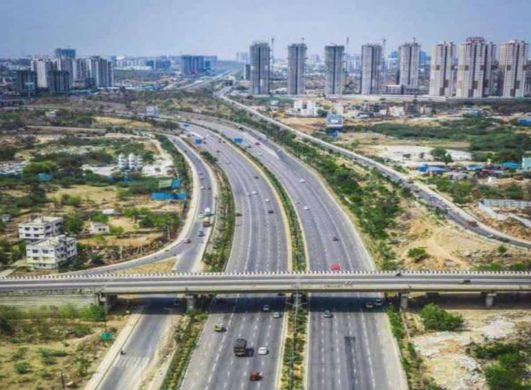Construction of the much-awaited 170 km-long Pune Ring Road project is set to begin after the current monsoon season.
By separating the inner-city traffic from highway traffic, the Ring Road will significantly enhance transit and bring down pollution caused by traffic jams.
Tenders for the inaugural 32-km stretch, which goes from the industrial hub Chakan to Ahmednagar Road, and Nagar Road to Solapur, has been released.
The project is being undertaken via Public Private Partnership (PPP) and Pune Metropolitan Region Development Authority (PMRDA).
The PMRDA is now drafting the DPR for the inner part of the Ring Road.
The Ring Road is a massive undertaking that will bring together six national highways which traverse the Pune Metropolitan Area (PMR)– NH-40 (Mumbai-Pune), NH-60 (Pune-Nashik), NH-753F (Pune-Ahmednagar), NH-65 (Pune-Solapur), NH-965 (Pune-Saswad-Palkhi Marg) and NH-48 (Pune-Bengaluru).
The PMRDA will also look at creating new residential and commercial nodes that dovetail with the Ring Road.
Anil Pharande, President, CREDAI (Pune Metro), said that it is by far the most progressive step that is being taken to improve the quality of life and overall efficiency in Pune.
“Across India, our cities have been growing with almost complete disregard to what the population at large actually requires. We have seen that important facets of the urban experience — support infrastructure, breathable air, management of waste management and dependable water — have received only token nods so far. The main development impetus has not been on critical infrastructure but on creating more and more cash-cow real estate projects wherever possible,” he said.
Citizens will benefit from this development model primarily because they can reach their places of work with a minimum commute and get back home easily.
“Increased family time, less inhalation of pollutants on jammed roads, lower fuel consumption, lower cost of public transport, improved public health readings and a highly upgraded quality of life. In the most successful instances of transit-oriented development globally, citizens have stopped using personal vehicles altogether. The annual household savings in terms of utilities and healthcare costs can be very significant,” said Pharande.


